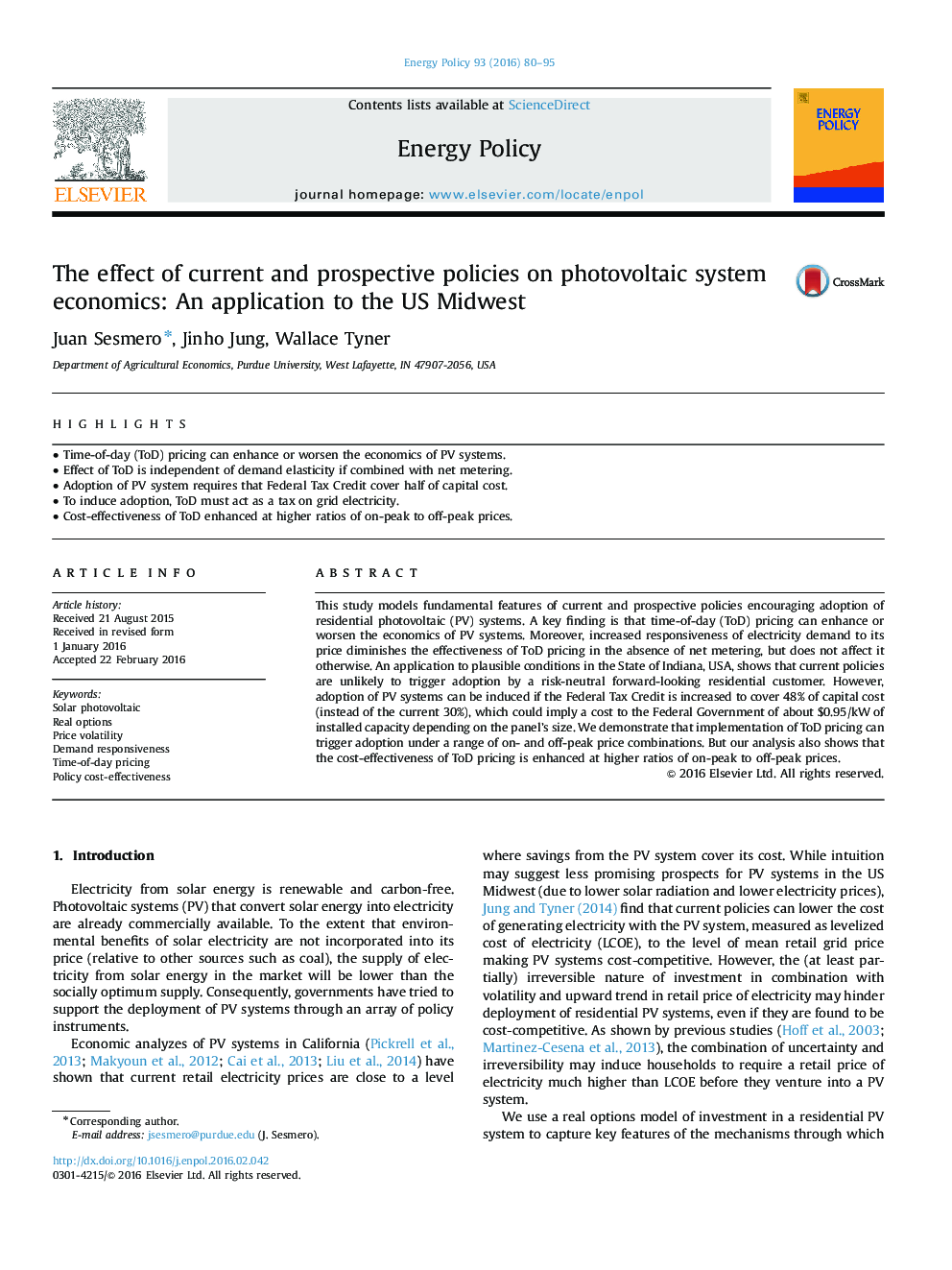| Article ID | Journal | Published Year | Pages | File Type |
|---|---|---|---|---|
| 7399338 | Energy Policy | 2016 | 16 Pages |
Abstract
This study models fundamental features of current and prospective policies encouraging adoption of residential photovoltaic (PV) systems. A key finding is that time-of-day (ToD) pricing can enhance or worsen the economics of PV systems. Moreover, increased responsiveness of electricity demand to its price diminishes the effectiveness of ToD pricing in the absence of net metering, but does not affect it otherwise. An application to plausible conditions in the State of Indiana, USA, shows that current policies are unlikely to trigger adoption by a risk-neutral forward-looking residential customer. However, adoption of PV systems can be induced if the Federal Tax Credit is increased to cover 48% of capital cost (instead of the current 30%), which could imply a cost to the Federal Government of about $0.95/kW of installed capacity depending on the panel's size. We demonstrate that implementation of ToD pricing can trigger adoption under a range of on- and off-peak price combinations. But our analysis also shows that the cost-effectiveness of ToD pricing is enhanced at higher ratios of on-peak to off-peak prices.
Related Topics
Physical Sciences and Engineering
Energy
Energy Engineering and Power Technology
Authors
Juan Sesmero, Jinho Jung, Wallace Tyner,
